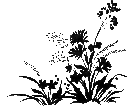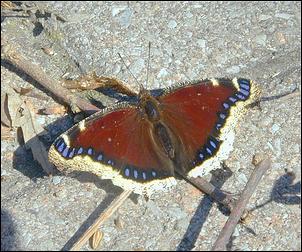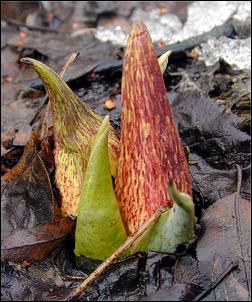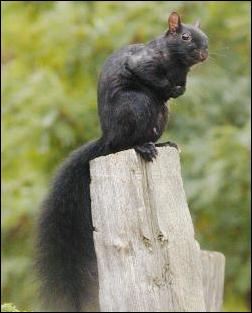 |
The Preserve |
News and Events |
Natural History |
The Trail |
Monitoring |
Restoration |
Library |
Organization |
|
Todmorden Mills Wildflower Preserve
|
Natural History
The species composition and abundance of plant and animal species that live in the Todmorden Mills Wildflower Preserve today reflects both historical and existing factors. Firstly, many original native species were lost when the forest was cleared and site was transformed in the 1800s into a small village. The addition of fill and garbage to the site, and the re-routing of the Don River, also had a major impact. The Preserve has been re-colonized, but primarily by non-native plants. Finally, a number of native species have been recently re-introduced as part of the TMWPC restoration efforts. In 2003, TMWPC commissioned am environmental study of the Preserve. Much of the information that follows is derived from the report, which can be ordered from the TMWPC at a cost of $15 (shipping and handling included).
The Preserve can be described in terms of the types of vegetation communities. The communities in the Preserve have been identified and mapped using the Ecological Land Classification system developed in Ontario (Lee et al 2000). A detailed and complete description of the communities and a map of their distribution in the Preserve is available in Kamstra (2003). Here we summarize the major habitats in the Preserve:
Rare PlantsSome of the native plants in the Preserve are considered special because they are regionally rare. Surveys by botanists have yielded 11 rare species in the Preserve. These include a sedge, two trees (Red Cedar and Slippery Elm) and herbaceous plants, most of which live in wetland habitats. One, the Skunk Cabbage, is quite common at Todmorden Mills. Non-native plantsNon-native plants, those species that did not grow here naturally prior to European settlement, now predominate at Todmorden Mills. While they represent just one-third of the species representation, they comprise over three-quarters of the plant biomass in the Preserve. Most of the non-native species have been introduced from Europe and Eurasia in the last 200 years. Many of these species are more abundant here than in their natuve range, and this is thought to be because their natural predators and competitors are not present here. At least half the non-natives in the Preserve are so successful that they are considered invasive and a threat to native plants and the vegetation communities which the TMWPC ais trying to restore. Among the invasives, some species have been identified as particularly threatening (Havinga 2000). At Todmorden, these include Manitoba Maple, Garlic Mustard, Pale Swallow-wort (also known as dog-strangling vine), Himalayan Balsam, Black Alder, Common Reed and Japanese Knotweed. Native Trees and ShrubsThere are 114 trees and shrub species in the Preserve, of which 78 (68%) are native. The most abundant native trees are (in no particular order of abundance): American elm, Eastern cottonwood, Trembling Aspen, Sugar Maple, White Ash, Silver Maple, and Eastern White Cedar. Shrubs are small trees which tend to be understorey elements in forest and which often have multi-branched form. Alternate-leaved Dogwood (also called Pagoda Dogwood) and Choke Cherry are the most abundant and widespread native shrubs in the Preserve. Apple trees and hawthorns are also widespread. Native WildflowersWildflowers, roughly defined as herbaceous plants with showy flowers which grow in natural areas (outside cultivation), are the original inspiration for creation of the Preserve. If we exclude the sixty species of ferns, grasses, sedges and allies, we are left with 200 wildflowers in the Preserve. In the meadow habitat, wildflowers in the Aster (Compositae) family, one of the most speciose families, predominate. Among the 50 species of composites are favourites such as New England aster, Black-eyed susan and Canada goldenrod. One-third of the Aster family is non-native, and includes some abundant and well-known species such as Wild Carrot and Chicory. Forest and woodland wildflowers include the spring ephemerals which founder Charles Sauriol was keen to re-establish. Some, such as Jack-in-the-pulpit and Skunk Cabbage, have survived from the original forests, Others such as White Trillium, Bloodroot and Wild Columbines have been reintroduced and have established. Marsh and swamp wildflowers of note include Marsh Marigold, Turtlehead and Spotted Jewelweed. A checklist of the common wildflowers is available here.
MammalsNine species of mammals have been recorded at Todmorden Mills. Grey Squirrel and Raccoon are seen regularly. A Muskrat was present in the pond in the summer of 1996 when it ate many recently-planted wetland plants. Muskrat was again seen in the Preserve in the summer of 2003. Six additional species including Striped Skunk and Woodchuck have been reported (Herzberg and Juhola, 1987). A checklist of mammals seen at Todmorden Mills is available here. BirdsA total of 94 bird species have been recorded in the Preserve. Most are transient, passing through on migration in spring or fall, but about 30 bird species reside at Todmorden. Residents include the Red-winged Blackbird which arrives in April and nests in the marsh at the pond and at the back of the Preserve. Baltimore Orioles build their distinctive basket-like nests in tall trees in the Preserve. A checklist of birds at Todmorden is available here. Amphibians and ReptilesGarter Snakes and Brown Snakes occur at Todmorden Mills. Green Frog is common in the Pond, and American Toads have been reported historically. A list of reptiles and amphibians reported in the Preserve is available here. FishAt least two fish species have been observed at Todmorden Mills; Brook stickleback (Culaea inconstans) and Creek Chub (Semotilus atromaculatus). InsectsThe most conspicuous insects at Todmorden are the butterflies and dragonflies. A preliminary list is available here. A non-native ant, Myrmica rubra, is extremely abundant at Todmorden Mills. It has a nasty bite. The ants are most active in summer and early fall. |
| Copyright © 2003-2004 Todmorden Mills Wildflower Preserve |


